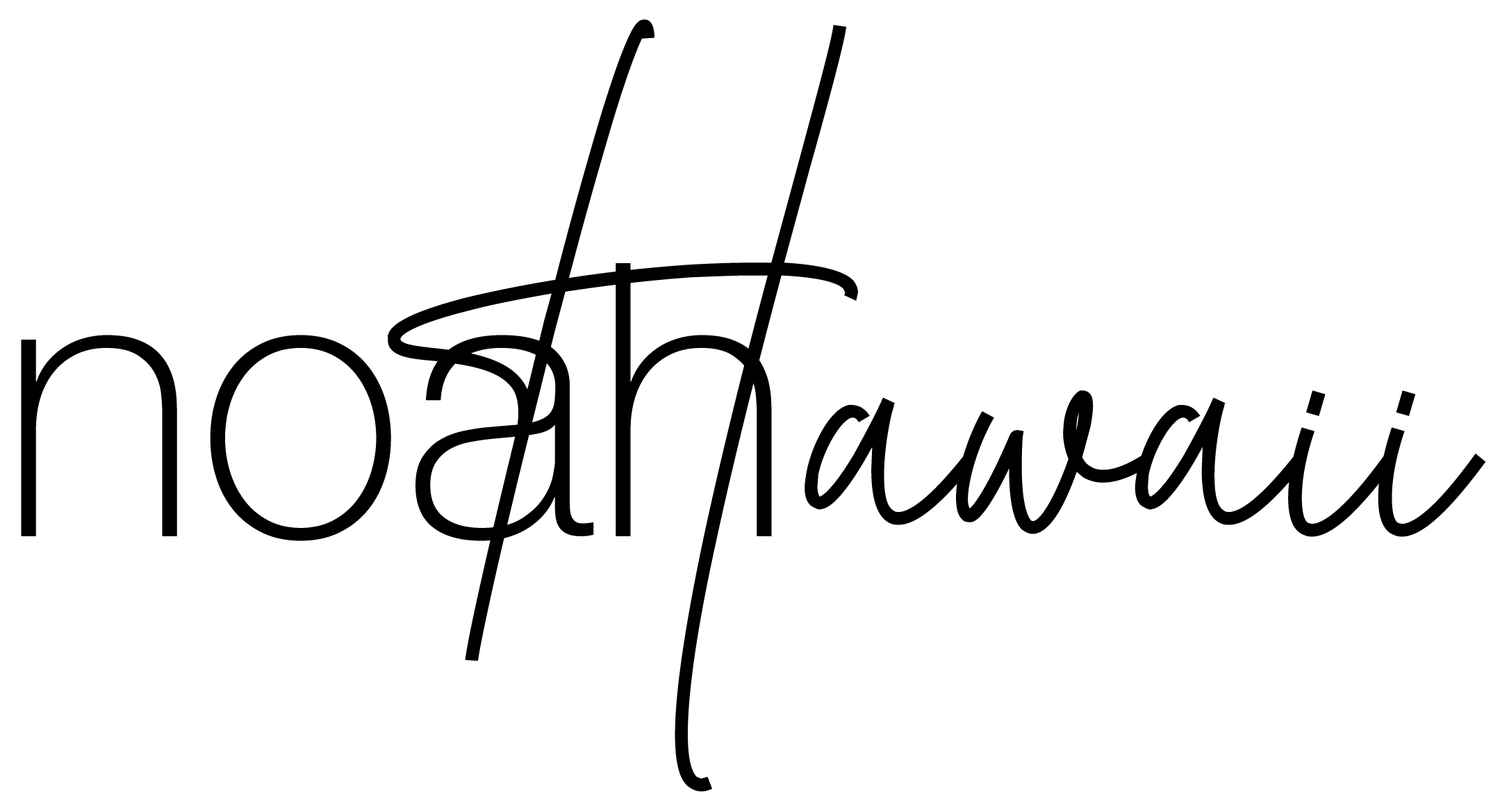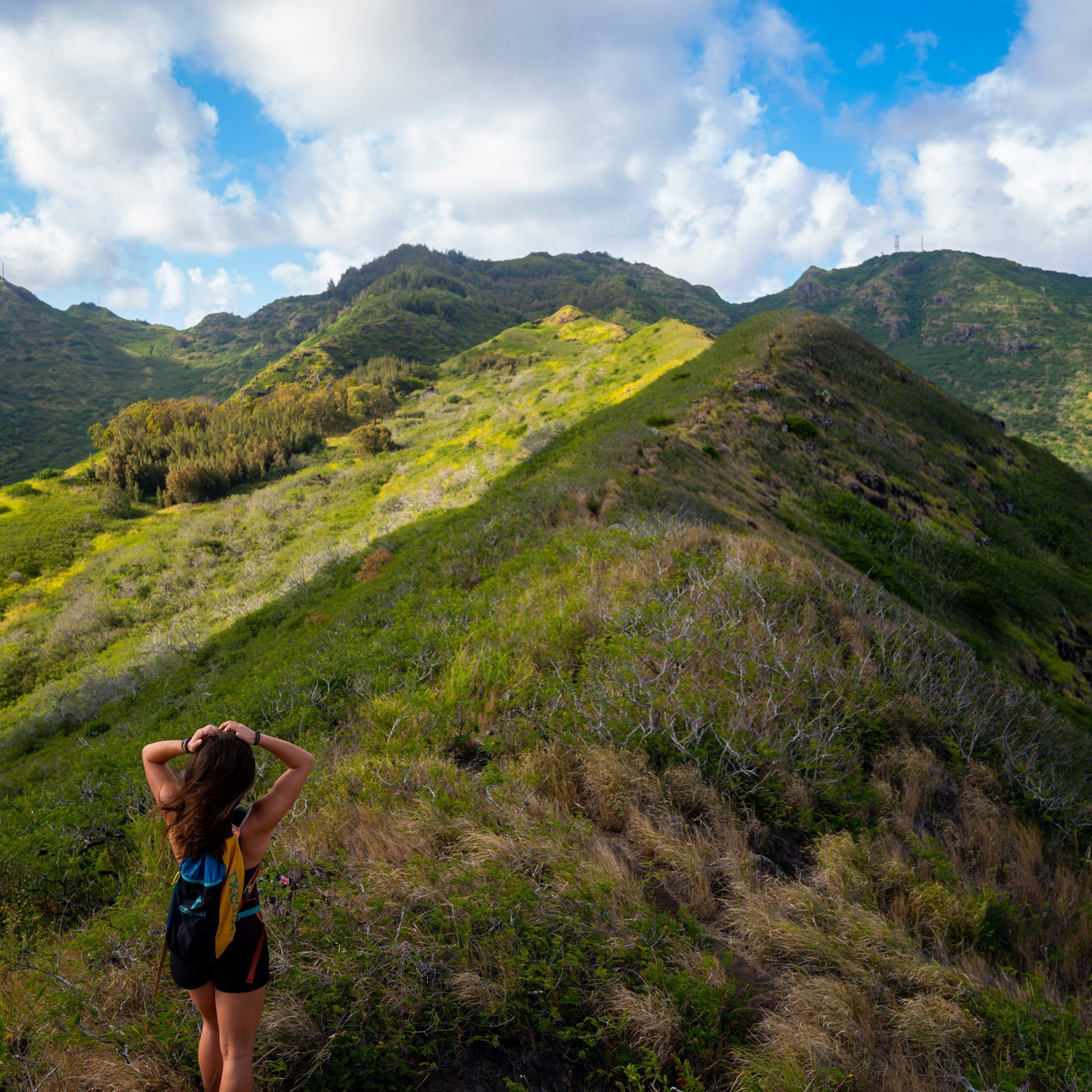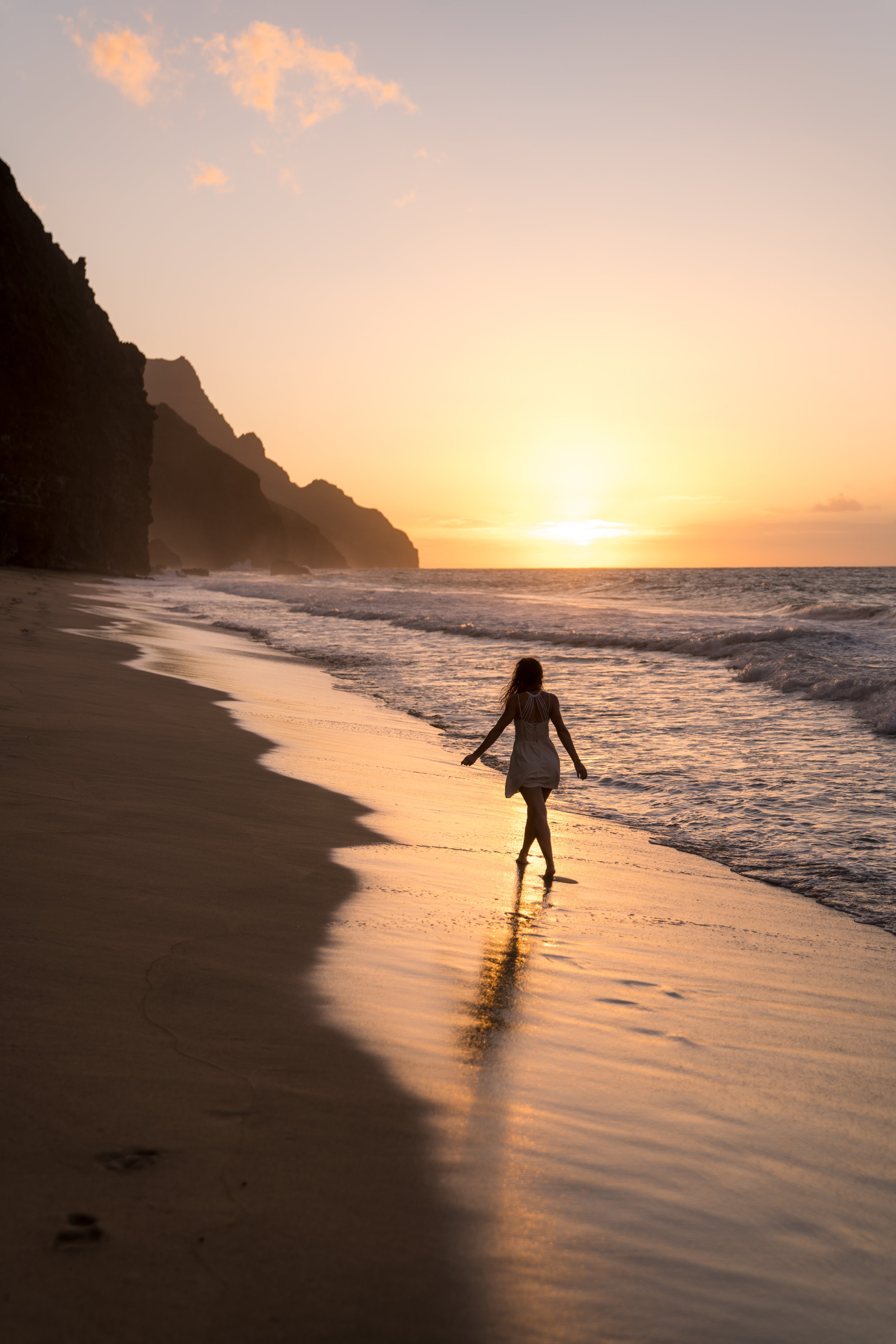Hiking the Keaʻau Middle Ridge Trail on Oʻahu, Hawaiʻi
Distance: 5.4 miles / 8.7 km
The Keaʻau Middle Ridge Trail on the West Side of Oʻahu is a short, steep, and, most of all, beautiful day hike in the back of Keaʻau Valley, and for a number of reasons, it’s one of my favorite adventures on the leeward side of the island!
The first reason I say this is that I personally love exposed Hawaiʻi ridges with some fun, but not too difficult, scrambling and climbing—such as Kolekole Trail to Puʻu Hapapa or Puʻu Kaʻilio. But the second, and perhaps more important, reason I think so highly of the Keaʻau Middle Ridge Trail is that the view from the summit looks out toward one of the few undeveloped valleys on Oʻahu—something that’s quite rare from most summits across the island!
All this to say, Keaʻau Middle Ridge is a fun but steep Class 3 adventure, but to those who are up for the challenge, the view from the summit makes the effort all worth it!
Keaʻau Middle Ridge Trailhead Parking
Parking for the Keaʻau Middle Ridge Trailhead is located at the very end of Keaʻau Homesteads Road, where the road meets the public access road for the hunting units within Keaʻau Valley.
While I personally view Keaʻau Valley as a safer place to park than other west Oʻahu trails, don’t get complacent.
By this, I mean, consider the Keaʻau Valley Trailhead to be a high-crime area for petty theft, meaning you should never leave bags or anything valuable in your car.
Google Maps Directions: Keaʻau Middle Ridge Trailhead
My Hawaiʻi Hiking Checklist
Osprey 3L Water Bladder - The Osprey 3L water bladder is the most universal hiking and backpacking water bladder on the market, and it’s my go-to because of the slide-off seal that allows it to be quickly filled from the top. Additionally, individual parts are easily replaceable, such as the bite valve.
Blister / Heel Protectors - I swear by these cheap, amazing heel protectors to prevent blisters for nearly every kind of hiking and backpacking that I do!
Black Diamond Headlamp - Personally, I recommend the Black Diamond Storm because it is one of the brightest, lightest, and longest-lasting headlamps on the market—and trust me, the weight-to-battery-life ratio really does matter!
Hiking / Trail Running Shoes - Depending on the type of trail, I prefer to use either the Keen Targhee for longer, more rugged hiking or the HOKA Zinal Trail-Running Shoe for lighter, less intense trails. In either case, both have been amazing to me for many years across countless environments, and both can be found in men’s and women’s sizes. - (Men’s Keen / Women’s Keen) (Men’s HOKA / Women’s HOKA)
Waterproof Rain Shell - You never know when it may rain, and I’ve learned over the years that a rain shell is far better than a rain jacket. By this, I mean that it’s best to have something that the water will roll right off of, which is why I recommend the Patagonia Torrentshell 3L available in both men’s and women’s sizes.
High SPF Sunscreen - Packing high-SPF sunscreen is a must for long days outside!
Hiking the Keaʻau Middle Ridge Trail
Note that, while there may be a number of posted no trespassing signs, the public has a right to access Keaʻau Valley via Keaʻau Homesteads Road.
From the parking area, simply follow the access road up Keaʻau Valley, which will continue for the first 1.4 miles (2.3 km) until the actual trail begins.
Waikomo Stream
Almost immediately after the Waikomo Stream crossing, turn right to continue up into Keaʻau Valley.
This is also where the access road comes to the first public hunting unit.
When the road appears to split, stay to the right to continue toward the middle ridge.
This initial section before the actual trail climbs somewhere between 700-800 ft. (213-244 m).
After a long walk through the bottom of Keaʻau Valley, the true Keaʻau Middle Ridge Trail finally begins at about 1.4 miles (2.3 km) into the hike when the trail crosses a typically dry intermittent stream.
Keaʻau Middle Ridge
Then, without much warning, Keaʻau Middle will make a hard left turn to start climbing the ridge.
Since much of the beginning is so gradual, most of the elevation gain on Keaʻau Middle is condensed into this short but very steep climb that begins not long after the stream crossing.
Additionally, there’s not a lot of shade on Keaʻau Middle, which is why I strongly advise hiking in a hooded sun shirt, like the ones linked below.
Warning
When Keaʻau Middle comes to this S-like pattern in the ridge, you have reached the beginning of some of the highest-exposure sections on the entire trail.
While these are absolutely sections where you cannot fall, Keaʻau Middle is a bit easier to navigate compared to other narrow ridgelines on Oʻahu, including some that I mention later in this post.
Past the S in the ridge, Keaʻau Middle will begin approaching this steep rock band, where the trail will contour around to the right in order to continue higher.
Keaʻau Contour
This contour is only 0.1 miles (0.2 km) and will abruptly end where the ridge begins ascending the start of the first real climbing/ scrambling section on the entire trail.
On the far side of the contour, make a mental note once on the ridge again, as this can be a very easy turn to miss on the hike back down.
Then, not long after starting up the ridge again, Keaʻau Middle comes to the first real climbing/ scrambling section of the hike.
These photos may make this section look worse than it is, but it isn’t the worst idea to bring your own rope incase the ones on this section are worn.
At the next opening, you finally start to get views of the true Keaʻau Middle Summit.
In my opinion, it’s not until this clearing in the ridge that the summit starts to feel close!
Finally, this last little contour may be the trickiest section to navigate on the entire trail, and for very tall people, it may be easier to climb directly up the ridge instead of the side, as this is another of many parts on Keaʻau Middle where you cannot fall.
Keaʻau Middle
From the summit of Keaʻau Middle, there’s spectacular views of both Mākaha Valley and Mt. Kaʻala off in the distance.
If you’re looking for a bit of a more challenging hike, check out the Kawiwi Ridge to Puʻu Kēpauʻula, more commonly referred to as Kamaileʻunu on the right side of the photo below.
The notch that you can see just below Kamaileʻunu is a bit of a tricky section, but everything after Puʻu Kawiwi to Puʻu Kēpauʻula is some pretty hard Oʻahu hiking, with the notch being the crux of the route.
Hiking Further (Keaʻau-ʻŌhikilolo Loop)
Keaʻau Middle can be extended, but do not continue past the summit if you weren’t prepared for it.
If you were to hike to the right from the summit, Keaʻau Middle traverses toward true Keaʻau, which would finish down by Mākaha Beach.
However, if you were to go left from Keaʻau Middle toward ʻŌhikilolo Ridge, the hiking gets significantly more difficult.
By this, I mean that there is one section between Keaʻau Middle and ʻŌhikilolo that’s more challenging than anything on the Keaʻau Middle Ridge Trail thus far. This is why proper planning, such as bringing additional ropes, is essential, as so few Oʻahu hikers traverse these random ridgelines.
Hiking Down
As mentioned previously, don’t forget about the hard right turn off the summit ridge and onto the Keaʻau Contour.
If you miss it, the ridge continuing straight will quickly become more overgrown, which should be a good indicator to turn back.
Native Plants on the Keaʻau Middle Ridge
Unfortunately, there aren’t a ton of native species to look out for on Keaʻau Middle, as fires and invasive species have had their lasting impacts on Keaʻau Valley.
That being said, there are a few to look out for, most notably ʻAʻaliʻi along the trail in the beginning. Additionally, once on the ridge, you can also see other natives such as Lama trees and a random ʻAlaheʻe or two. If you’re lucky, you may even spot a Wiliwili, but it’s unfortunate that one of the largest Wiliwili stands on Oʻahu has succumbed to fire, which is now just remnants of the past.
All said, if you would like to learn more about these and tons of other native plants from across the islands, I encourage you to scroll through my separate post.
Read My Separate Post: Native Hawaiian Plant Guide
More Oʻahu Adventures
If you’re interested in reading about some more amazing Oʻahu adventures, check out my separate posts below!
Best Hotels & Restaurants in Waikīkī
If you’re trying to decided where to stay on Oʻahu, check out my top 10 list for the best resorts and restaurants in Waikīkī.
I break down what makes one hotel a better choice over another, so that you can find the best fit for your stay on the island.
Read My Separate Post: Best Waikīkī Hotels & Restaurants
HNL Airport-Hotel Shuttle
Prices on ride-share apps like Uber/ Lyft cannot beat the price of booking your hotel shuttle prior to arrival. I say this because there are additional fees for ride-share airport pick-ups at Honolulu Airport (HNL), which is why I recommend booking your transportation in advance using the options below.
Additionally, the last option below will go as far as the Ko ʻOlina Resorts on the West Side and Turtle Bay on Oʻahu’s North Shore!
Best Way to Book Rental Cars!
I travel quite a bit, and I know firsthand that finding a good rental car deal can be a challenge, but that’s why I recommend comparing all of your options with Discover Cars.
In short, Discover Cars is a well-known, reputable business that allows you to search for the best deal across companies, and they have the best full-refund cancellation policy I’ve ever seen, valid up to 72, or sometimes even 48, hours prior to your reservation!
Book Here: Discover Cars
Visiting Other Islands
If you are visiting Oʻahu or heading to another island, check out some of my personal recommendations for Oʻahu, Maui, Kauaʻi, Molokai, Lānaʻi, and Hawaiʻi Island (Big Island) in these separate posts.
If you’re trying to decide which island is right for your visit, check out my overview about each island in the post below.
Read My Separate Post: What is the Best Hawaiian Island to Visit?
What is the Best Time of Year to Visit Hawaiʻi?
The weather in Hawaiʻi can often appear to be warm and beautiful throughout the year, but in my experience, there is a lot more to consider when planning what time of year to visit the islands, such as what island you are considering, what sides of each island do you plan to stay, what activities are you most interested in, the wildlife, and countless other nuanced variables that can all impact the type of trip you can expect to have.
For these reasons, I highly recommend reading through my separate article to not only understand my thoughts regarding the best time of year to come to Hawaiʻi but also what you need to consider based on the time of year that you plan to visit.
Read My Separate Post: What is the Best Time of Year to Visit Hawaiʻi?
10 Best Tours & Excursions on Oʻahu
There are a lot of different tour options to choose from on Oʻahu, but to make it easier to decide, I made a list of my favorite tours because some things simply are better with a local guide!
Read My Separate Post: Best Tours on Oʻahu
Safety
All hikes in Hawaiʻi should not be compared to trails outside of the islands, and hikers should exercise due caution on every adventure, given that many are extremely dangerous.
By this, I mean that Hawaiʻi is known for hot, humid weather, steep, dramatic, and unstable cliffs, and flash floods, which can occur without warning. Therefore, it is important that you check the local forecast, understand the physical condition of your entire group, and pack sufficient food and water before attempting any adventure.
Disclaimer
All information provided on this blog is for informational purposes only and is not intended to be a substitute for information or advice from qualified professionals or managing agencies.
Noah Lang Photography LLC makes no representations or warranties regarding the accuracy or completeness of the information provided here, and readers should use their own discretion, judgement, and seek professional advice where it is appropriate.
Furthermore, Noah Lang Photography LLC shall not be held responsible for any injuries, lost individuals, or legal issues arising from the use of information provided on this website, and if applicable, the above safety disclaimer should be referenced to provide a generic overview of the risks involved.
All said, the content on this blog is for the sole use of Noah Lang Photography LLC, and unauthorized use or reproduction of this content is strictly prohibited.
Disclosure
This post is not sponsored.
However, some of the links in this post are affiliate links, which means that I may earn a small commission if a purchase is made through one of those links. This commission comes at no additional cost to you, and I only recommend products that I personally use and believe will add value to my readers. Thank you for your support, which enables me to continue creating more!
To read the full privacy policy, click here.

About This Blog
Noah Lang Photography, also known as @noahawaii, is 100% reader-supported!
I do not accept guest articles or sponsored content of any kind on my blog, which is why, if you enjoy the outdoor and travel content I create, please consider buying me a coffee!
I appreciate your support, which helps me continue to keep this blog alive!































